As the moving date approaches quickly, one most probable question that crosses one’s mind is: how many moving boxes and of what size do I actually need? The moving process is a time-consuming one involving a whole lot of work to do, making it a bit stressful for many. But with the right choice made in respect of the moving boxes, you are most likely to keep that extra hustle and bustle at bay.
When it comes to choosing the number and size of boxes for your move, you need to consider several factors to come up with the best results for yourself, as there’s no rule of thumb for it. Just taking into account the quantity and kind of stuff that you have isn’t enough at all, as a lot more work is required for it.
To help you reduce your stress load and aid you in your moving process, we’ve curated this guide that gives a brief overview of the different moving box sizes that one can go with. We’ll also go along with their different types and associated costs, such as which box is suitable for which kind of job, and so on. After following this guide, not only would you be able to organise everything correctly, but the chances of any sort of damage would also become nil.
1. Common Packing Box Sizes
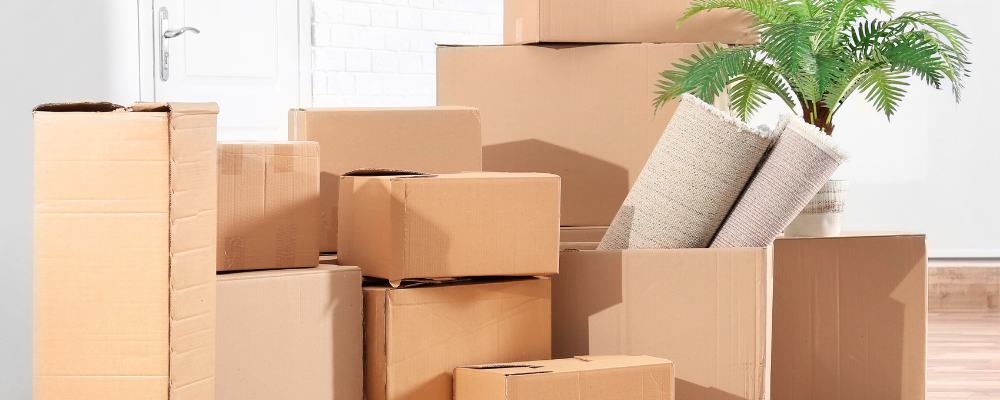
Despite the wide variety available on the market, corrugated brown cardboard boxes are the ones that are most commonly used. As movers tend to charge you by the weight you will carry with them, you don’t want your moving boxes to weigh themselves a lot. This is where the brown cardboard boxes are useful. Not only are they impact-resistant, but they are light enough to keep your overall moving expenses low as well.
| Type Of Box | Average Cost |
|---|---|
| Extra small | Around 2.50 AUD |
| Small | Around 3.00 AUD |
| Medium | Around 3.50 AUD |
| Large | Around 5.00 AUD |
| Extra-large | Around 6.00 AUD |
1. Extra small
These have a dimension of around 15 x 12 x 10 inches, which makes them suitable for tools, collectibles, books, and other small stuff that doesn’t require much space for themselves. You can also store some of your stationary items that you use on a daily basis.
2. Small
3. Medium
4. Large
5. Extra-large
Specialty Packing Boxes To Consider
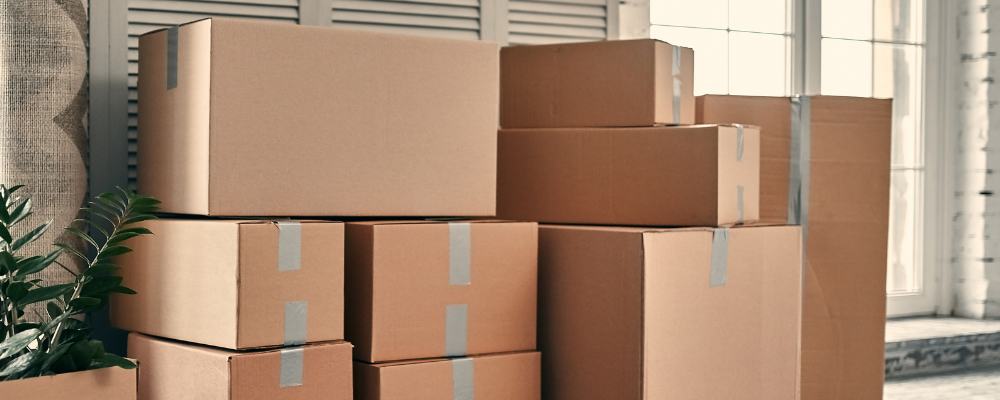
Another great idea while packing your stuff to make the shifting move easier is to opt for speciality packing boxes. They carry so much utility for packing that stuff that normally doesn’t have a normal shape or requires some extra protection for themselves. During your move process, you don’t want your items to incur any sort of possible damage. At times, you might be in possession of some sort of pharmaceutical or biological sample that requires specific temperature conditions to remain in good condition.
1. Wardrobe Boxes
2. Dish Pack Boxes
3. Tv Boxes
4. Mattress Boxes
5. Art Crates Boxes
6. Plastic Bins
7. Lamp Boxes
These are specifically made for carrying lamps in them to keep them safe during the transit process. You don’t want to face the situation of your lamp not turning on after you unload it from the vehicle used for moving.
8. Mirror And Picture Boxes
Average Boxes Needed For Each Room
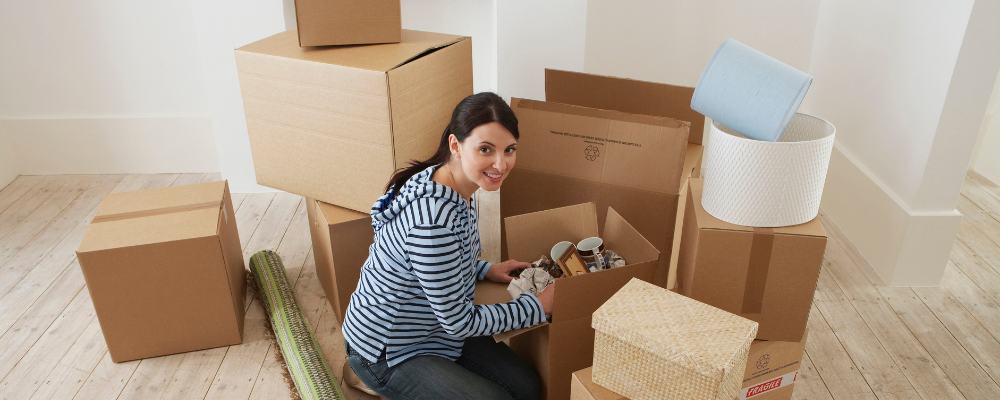
As per the average estimate, a household owner needs around 60 boxes for his two-bedroom home. But not everyone lives in a two-bedroom home, and thus you must be worried about your box’s requirements. The number of boxes one might require for his home will be based on his lifestyle and his belongings.
Thus, it’s suggested to first determine the number of members that live in your home and see how many rooms there are in total to come up with the right estimate of the moving box requirement. Still, to make it easy for you to have an estimate of the boxes that you will need for each of your rooms, we’ve mentioned the following information:
1. Dining room
In this case, you would need some extra pairs of boxes for keeping your stuff, such as glassware, bowls, wine glasses, table linens, and much more. Along with it, there are people who prefer storing candle holders, vases, and candles in the boxes. So for it, we’ve got the following recommendations:
- 1 medium box
- 1 large box
- 1 dish packing box
- 1 glass cell packing box
- 2 small boxes
2. Kitchen
While some people don’t have much stuff going on in their kitchen, others have a compiled collection of mugs, pots, pans, dishes, appliances, and other gadgets that they make use of for cooking their meals. In this case, we’ve got the following recommendations:
- 2 large boxes
- 2 glass cell pack boxes
- 2 dish packing boxes
- 2 small boxes
- 2 medium boxes
3. Living room
Living rooms are generally full of items and other stuff. While some prefer a clean and simple modern space, others look forward to adding accessories and other artwork to this room of theirs. So you need to make an estimate based on what’s in your living room. Still, the general recommendation goes as follows:
- 2 small boxes
- 3 medium boxes
- 2 small boxes
- 1 medium box that is heavy duty
- 2 large boxes
- 1 extra-large box
4. Bathroom
They are kind of a storehouse for a range of different products, such as shampoos, gels, powders, creams, makeup products, and other small electronics. While one might have a small powder room as their bathroom, others might have a large and spacious one.
So before you begin packing the stuff present in the bathroom, consider making an estimate of what you require and what you don’t at all. For this room, we’ve got the following recommendations:
- 1 medium heavy-duty box
- 1 extra-large box
- 2 small boxes
- 2 medium boxes
5. Master bedrooms
Just as in the case of the living room, the items that people have in their master bedroom vary from person to person. While some people go for keeping minimal stuff with them, others go for having a number of magazines, books, artwork, duvets, mirrors, decorative pillows, and more in their master bedroom. For it, we’ve got the following recommendations:
- 2 small boxes
- 1 medium box that is heavy duty
- 3 large boxes
- 2 extra-large boxes
- 4 wardrobe boxes
- 3 medium boxes
6. Children’s bedrooms
Ranging from books to clothes to toys to different sorts of electronics, children’s love to keep a collection of items in their room. Still, the number of boxes that one might require for their children is most likely to vary from kid to kid. On average, you might require the following type and number of boxes:
- 3 large boxes
- 2 extra-large boxes
- 2 small boxes
- 2 medium boxes
How to Choose the Right Size and Style of Moving Boxes For Yourself?
As the experts suggest, it’s always best to overestimate your need for the boxes instead of making multiple trips to the store for them. The whole aim of choosing moving boxes is to make the whole process of packing and unpacking a lot easier for you. The main factors to take into consideration when coming up with the right size and style of moving boxes for yourself are: what are you moving, how much does it weigh, and what shape does it bear?
Check out this website to know exactly how many moving boxes you would require for moving to a new possession.
From Where to Get Moving Boxes?
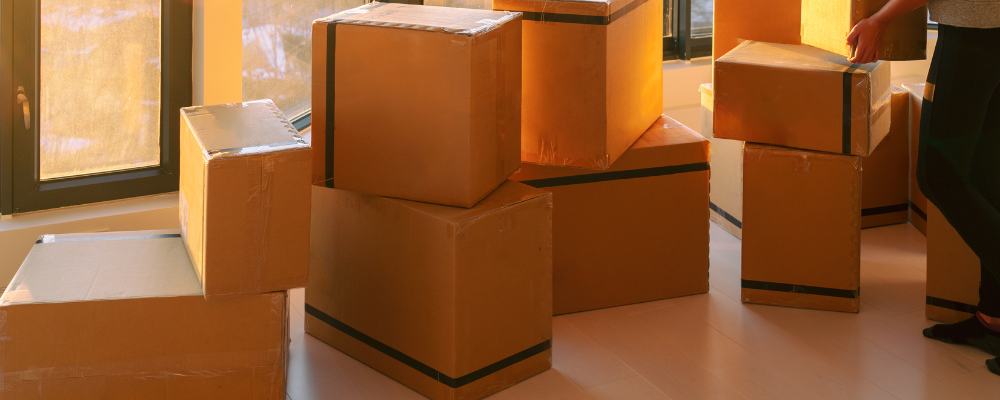
Who said that you need to pay in order to acquire these moving boxes? There are multiple sources from which you can easily acquire these moving boxes without paying even a single penny from your pocket. Have a look at some of the best sources from which you can get them:
1. Liquor Stores
Head over to liquor stores to get some sturdy boxes for yourself. Most likely, you’re going to get small boxes that might not have any lids on them. As they get orders delivered almost every week, you are most likely to find empty boxes over there.
2. Local Grocery Stores
As they secure multiple weekly deliveries, you are most likely to get your need for moving boxes fulfilled after heading over to one of your local grocery stores. Talk to your local grocer and let him know about your need for boxes.
3. Facebook Community Groups
Join a reliable Facebook community group and see if you can secure some moving boxes for yourself or not. Thousands of people come up front to buy and sell different commodities. Connect with any group member to buy some boxes for yourself.
4. Bars And Restaurants
All those boxes that different bars and restaurants make use of for moving their commodities are very steady in nature. Just contact the manager of these establishments, and they will be more than happy to assist you while taking them off their hands.
5. Recycling Centres
You can always go to a recycling centre to see if they have some boxes free for usage. One can easily secure a good number of moving boxes after visiting a recycling centre.
6. Bookstores
Those looking to get some sturdy boxes for their moving purposes need to pay a visit to the bookstores. In them, you can easily carry some of your heavy items for moving purposes. You can go over to any of your nearby bookstores to see if they’ve got some boxes ready for use or not.
Tips to handle moving boxes correctly
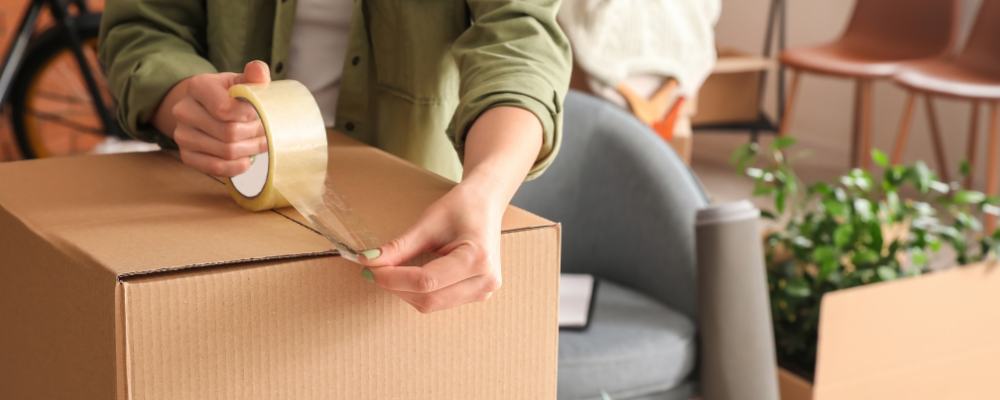
Not all kinds of moving are the same. The reason for this is the difference that lies in the type and size of moving boxes. Going through the process of shifting over to a new possession is crucial for the safety and security of your belongings, which will make the moving process a lot more efficient. Look at these tips to consider while planning for a move:
- Begin by choosing a sturdy and high-quality moving box that will carry all of your items very well.
- Use speciality boxes for fragile stuff such as glassware, electronics, and dishes.
- Try to place heavier items at the bottom of the box while keeping the lighter ones at the top.
- To fill out the empty space, use bubble wrap, packing paper, or any clothing that will prevent items from shifting during the process of transportation and will also minimise the risk of any damage.
- Aim for labelling all the boxes clearly with their contents to make the unpacking process a lot easier.
- Always reinforce the bottom of the boxes for added security to prevent them from coming apart during transportation.
- Breakable items need to be safeguarded individually, either by using bubble wrap or additional padding.
- Consider getting professional help if you’re not comfortable enough to lift heavy boxes.
Concluding Thoughts
Moving or shifting over to a new possession might be stressful for many. But with the right planning and execution, you are most likely to complete this activity without much delay or problems. Just remember to consider and calculate the right number and size of the moving boxes that you would require for all of your commodities and items. Doing so will not only give you complete peace of mind but will also ensure the safety and security of all of your belongings.
